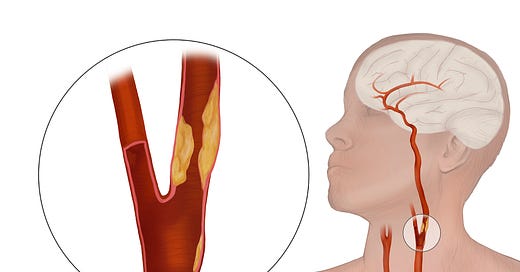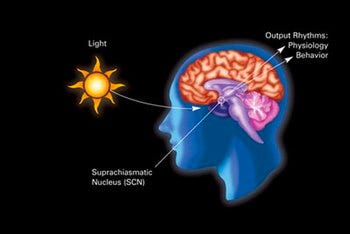Your Guide to Preventing Heart Attack and More
Heart Health/Endothelial Function, Sleep, Nitric Oxide, Oxalates, Kidney Stones
If you’d like a video version of this click here…while you’re at it be sure to consider subscribing to the channel. I’ve been doing my research and have stumbled across a lot of great information for heart health and preventative mechanisms for longevity, especially for those prone to heart events. If you are in the fitness world and you’ve made the decision to use performance enhancements their is a emphasis one ought to place on the state of the heart when using enhancements. When using any sort of exogenous or foreign product, especially that has the power to alter hormones, you should educate yourself on the possibilities both good and bad. Building muscle tissue is a goal of many, and building the muscle of the heart is not ideal; for, it can lead to many issues especially if you are genetically designed to be a 120, 130, 150, 190 lb female or male. Or if you are someone that wants to simply live a healthier lifestyle and is passionate about preventative health, and/or has a family history of heart events and want to prevent it from happening, then read on!
My goal is to educate you on preventative mechanisms to still be healthy while making these choices. I mention in my youtube videos that if something has the power to positively change you, it also has the power to negatively change you. So if you care about your health, longevity, well being, and overall person I’d hope you look into these options you have at your disposal and use it to better yourself. Looking good on the exterior is just as important (for some, not all) as the status of the interior health.
Here is a photo of the carotid artery, which I will refer back to in a moment.
Tier #1: Improve heart health
The total cholesterol and LDL cholesterol are not too good to predict risk for atherosclerosis, the cholesterol is not the problem. It’s the lipoproteins that are transporting it around the system. For this you can get advanced lab work that looks at
LDL particle count or APO B particle = both of which are the main ships driving the cholesterol around the system
Traditional lipid panels: useful to look at your triglycerides levels and HDL-C.
I.e if your HDL-C is 50 and triglyceride is 100. Divide 100/50= 2. A score of 2 or less = you’re insulin sensitive, but their are other tests to check this
Endothelial damage; different ways to identify it:
Max pulse test
EndoPAT test
Both test the elasticity of the arteries. If you have springy arteries, means good function of endothelial cells. If you have more stiff arteries, could mean their is a endothelial problem
Another test: Carotid Intima-Media Thickness test (CIMT): Looks at the thickness of the walls of the carotid artery (refer to picture above). The thicker of the walls of the carotid artery, the more inflammation present. The CIMT can also give you a vascular age. So if you are biologically 20 years, but your arteries are aged older….you’re essentially as old as your arteries.
Tier #2: Diet and Exercise
Diet and exercise is important
Keep in mind that how you deal with stress is also important and how long does it take you to get back down to a normal baseline
Sleep, if you don’t sleep well you don’t repair the damage that was going on during the exercise;
Control your light environment: block artificial light when inside and wear tinted glasses when using computer
Day time blue light glasses block up to 450 nanometers, should have some degree of yellow tint to it
Evening time preferably one with 550 nanometers or greater: the red pair
Rise with the sun. When you look at the sun when you and it rises, it’s the sun that sets the clock for the day. The light from the sun programs a receptor in your brain called the super cosmetic nucleus, the master clock. Tells you how to make neurotransmitters and hormones
Tier #3 Heart Scan, Coronary Calcium Scan
You don’t want your heart muscle to get big, only your muscles (unless your goal isn’t muscles, what have you)
When the heart gets to be big, it starts to get more stiff and can end up with whats called diastolic dysfunction.
The heart is a muscle, ⅓ of the muscle is made up of mitochondria. The mitochondria is a organelle (fancy way of just saying it’s a little ‘thing’ in the cell) in the cell that generates energy to power the cell’s biochemical reactions (also called the powerhouse of the cell). It takes more energy for your muscle to relax than it does to squeeze
When your heart becomes thick due to sleep apnea, high blood pressure, or significant performance enhancing drugs, the heart may be low on energy to relax easily; and fluid can start building in the lungs
Eventually the heart can also start to have systolic dysfunction where the heart doesn’t squeeze well
If you’ve had sleep apnea, high blood pressure, or used PED for a long length of time it’s good to see what’s going on with the structural integrity of the heart muscle; you can look into getting a echocardiogram - takes a look inside the heart
Below is a photo of the results from the coronary calcium scan. you want to be at 0
Tier #4: Nitric Oxide in Exercise Physiology
Physical activity and nitric oxide (NO) seem to be related. Evidence suggests that physical activity enhances NO production, and thus exercise is normally recommended for increasing the level of NO for athletes and patients with cardiovascular disorders for therapy
NO is a molecule produced naturally by the body with its main function in vasodilation aka relaxing the blood vessels to widen and increase circulation
Ways to increase nitric oxide is by consuming vegetables because they are high in nitrate
Celery, beetroot**, spinach, arugula
Consuming antioxidants
Glutathione, vitamin c, vitamin e, polyphenols
Exercise
**beetroot is high in a oxalates, which are found in most plants and humans, and can promote kidney stones if you are prone to it. Oxalates in plants help get rid of extra calcium by binding with it. So if oxalates are high they can bind to the calcium in the urine which can lead to kidney stones ad crystals to form in some people (not all).
Oxalate rich foods:
Spinach
Soy Products
Almonds
Potatoes
Beetroot
Legumes
Rasberries
Dates
Avoid High-Oxalate Levels
Just like this life, balance is useful in many situations especially with food.
Drink enough water to flush out excess oxalates: i’ve seen this through personal experience where a guy I knew barely drank any water and he learned the hard way after getting kidney stones to drink more water moving forward
Consume the recommended amount of calcium, (it binds to oxalates during digestion then you urinate it out). 8 oz of 1-2% cow milk is about 300 mg of calcium. 8 oz of almond milk is about 450% of calcium. I drink almond milk because it has a negative relationship with skin health in my case, but every body is different. I also prefer the taste of almond milk. Once you make the switch, you’ll notice the difference when you taste cow milk just how much sugar it has compared to almonds
Limit sodium and sugar intake, almost all processed foods are high in sugar. Try to stick to, for example, regular cheerios instead of honey nut cheerios.
Get the recommended amount of vitamin C, excessive amounts can increase oxalic acid production
Boil or cook the high-oxalate vegetables in with your other foods to lower their oxalate content
Adopt a Low Oxalate Diet
Kale and bok choy
Cashews, peanuts, and walnuts
Pumpkin and sunflower seeds
Sweet potatoes
Broccoli
Kidney beans
Blueberries and blackberries
Dried figs
Putting it All Together
Well that was a handful! As you can probably tell I am fascinated by nutrition, exercise physiology, fitness, etc. Although I also have a passion for writing, I think, and art (that’s why I have a instagram…) I think this substack is moving along.
I know this helped you, so let’s be nice and consider subscribing to the Substack to receive more publications. Either way you can technically find everything online for free, but the difference is sometimes the publications are outdated or coming from someone who is not qualified to speak on the topic…welcome to the internet.
That’s all for now.
Until next time.
- Yelena Espinoza
Disclaimer
This is not legal, medical, or financial advice. Always consult with your medical professional before starting any workout program, diet plan, or supplement protocol.







